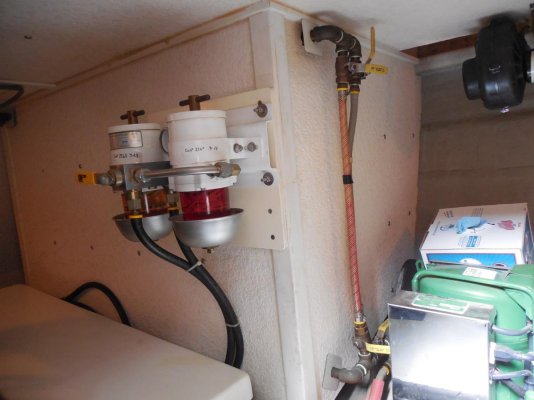CaptFun
Member
I bought a Tiny Tug out of Brewerton NY, headed to Oswego, crossed Lake Ontario, crossed west to Trenton.
During the voyage I had to change my Racor 3 times.
Question, could I install a second primary Racor plumbed to the original,
then when the engine began to stumble, switch the valve, (valves?), and continue my journey?? I could replace the clogged filter after the engine cooled?? How about a 20 gallon "day tank"??

Many thanks to one and all
During the voyage I had to change my Racor 3 times.
Question, could I install a second primary Racor plumbed to the original,
then when the engine began to stumble, switch the valve, (valves?), and continue my journey?? I could replace the clogged filter after the engine cooled?? How about a 20 gallon "day tank"??


Many thanks to one and all


